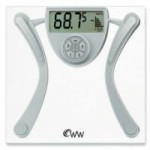When it comes to building muscle mass, what’s obviously most important is that you remain above your maintenance calories so that you provide your body with the necessary nutrients required to grow. This is often termed, “bulking”. However, a common misconception I’ve stumbled upon when hearing people talk about building muscle mass is how much muscle you can put on at once. Very often, people do indeed succeed in getting above maintenance, and can see size changes over time, however, without calorie counting they are usually way above their required maintenance and put a decent bit of fat on while building muscle mass. They, of course, claim that they’ve put on a good deal of muscle, confusing the fat and muscle combo with pure muscle gain.
Sticking with this premise, it’s important to realize that in order to achieve pure muscle gain, your diet has to be near perfect, most importantly when it comes to counting calories. We’ve covered this in our calories per day article, but we’ll use this article to expand. Although I’ve recommended in that other article that 200-300 calories is optimal to get your best shot at pure muscle gain over time, it’s obviously going to be slower and really require your calorie counting. Many people feel they don’t need to be bothered with this, and want to see results faster. So they use the idea of building muscle mass as an excuse to pig out, and eat way above their requirements by stuffing themselves down. Now don’t get me wrong, for the hard gainers who really need to put on some weight and have a hard time gaining pounds, go for it. For many others, however, this will only lead to increased fat gain (which, with a bit of muscle gain mixed in, they’ll mistakenly claim is all muscle gain – well, until it’s too obvious they’ve put on fat).
Many people hold the belief that the more you eat, the more muscle you will grow. If you push yourself hard in the gym, and just pig out, you’ll give your body enough to produce more muscle than someone eating less than you but who’s still above maintenance. Unfortunately, your body does not work this way. Short of steroids, our bodies are only able to put on small amounts of lean, dry muscle gain per month. Although a topic for another article, usually under perfect conditions, on average, you’re most likely going to put on 1-1.5 pounds of muscle a month (if you’re lucky). Eating more is only going to lead to fat storage, because once you feed your body enough for it to produce muscle optimally, the rest will not be used for anything more than packing on the pounds (not in the way you want). Therefore, when people come back after 2 months and say they’ve put on 10 pounds of muscle, not only is that impossible but they are severely mistaking total weight gain with muscle mass increase.
Once you start going well above your maintenance, you’ll quickly pack on some pounds simply off of water weight, presumably due to the higher carbohydrate intake which increases water retention. After that, if you do keep up with a high above maintenance caloric intake, your body will pack on weight (but as illustrated in the paragraph above, most of it will not be muscle gain). Therefore, when building muscle mass, get the idea out of your head that you’ll pack on muscle mass fast. You won’t, and you’re only short changing yourself in the end if you do pig out because you’re going to have to cut the fat down the road and waste valuable time you could’ve just used to keep bulking nice and slow (200-300 calories above). Now, as I stated, those who really need to put on weight overall are not affected by this, if that’s what you need to do to gain some pounds then do it. Let’s face it, some people are hard gainers and even stuffing their faces will place them barely above maintenance, if even.
You’re not super human, you’re not above anybody else (at least, not significantly enough to completely be out of the average calculations of muscle gain), therefore, do yourself a favor and make sure you’re above maintenance, but don’t go overboard. It’s really not necessary. Some guesstimating in terms of calories is the least you can do, even if you’re not exact. You want results, you have to work for them in the kitchen as well as the gym. After all, it’s all about being aesthetically pleasing, right? What’s the pleasure in packing on size in a shirt, but taking it off and being fat in the wrong places (yet the places the shirt manages to hide). Hey, maybe it’s the goal of some, if so, go for it. For most, you’re looking to look good without a shirt, so don’t be extreme while trying to build muscle mass because there are no shortcuts.
A good amount to gain per month is 2 pounds (at most), this amount will minimize fat gain while you’re building muscle mass. You can also check your changes in the mirror, and if you notice you’re putting on fat, lower the calories. Be realistic about your goals, and don’t expect to pig out and gain considerable muscle gain – if it really worked that way, everybody would be walking around built, no? Manage your calories in some way or another, and make sure your protein intake is high. Work hard in the gym, and although results will be slower, you’ll be making sure they’re the right results. Good luck!
*Friendly Tip:* If you’re trying to limit fat gain, besides being only a bit above maintenance, you should also drink green tea on a daily basis. Doesn’t do all that much in terms of calories, but increasing your metabolism by even a little bit is a positive plus even while bulking and isn’t restricted to green tea dieters (those cutting).
Incoming search terms:
- bulking
- aesthetically pleasing
- is running bad if your trying to build muscle
- mail (will not be published) weight loss
- dry muscle gains
- mail (will not be published) muscle builder








I am not real fantastic with English but I get hold this really leisurely to read.